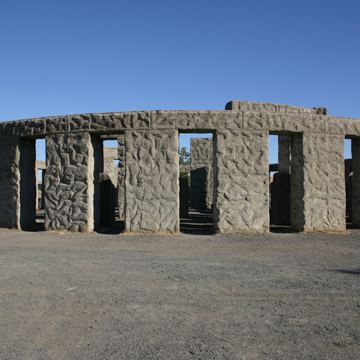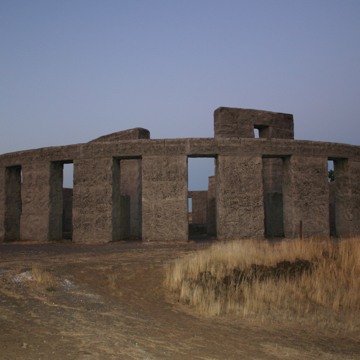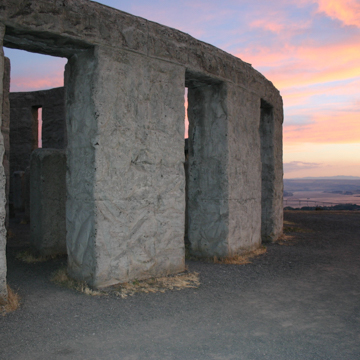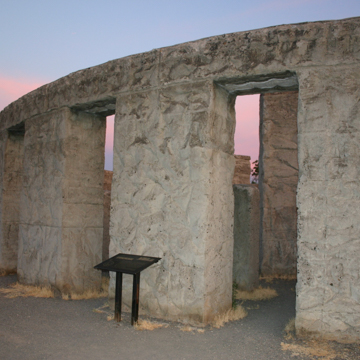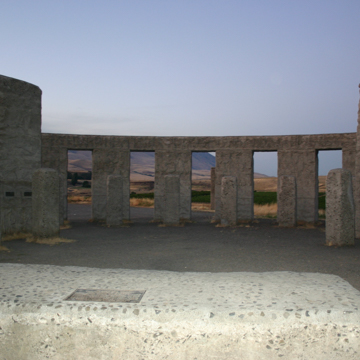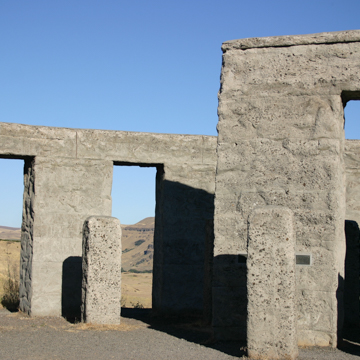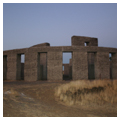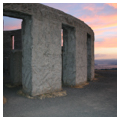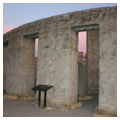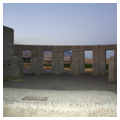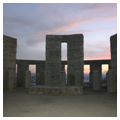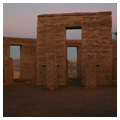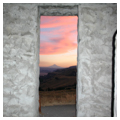The Stonehenge Memorial was the first monument in the United States to honor the soldiers of World War I and may be the oldest full-scale replica of Stonehenge built anywhere in the world. It stands three miles east of the Maryhill Museum of Art on a bluff overlooking the Columbia River.
Dedicated on July 4, 1918 to war veterans while World War I still raged in Europe, industrialist Samuel Hill chose to reconstruct what is widely considered the final stage of the original Stonehenge built during the Neolithic era on the Salisbury Plain in Wiltshire, England. Hill’s inspiration was not archaeological, however; rather, he believed—along with many others at the time—that the original Stonehenge was a place of druidic sacrifice and that modern warfare was another form of human sacrifice. Hill, a pacifist and son of a Quaker minister and a devout Quaker himself, wanted his Stonehenge to serve as a physical reminder of the “folly of war.” A second dedication took place on Memorial Day, May 30, 1929, upon completion of the monument.
Unlike the stone construction of the original Stonehenge, the Maryhill version is made entirely of concrete. At Maryhill, thirty 16-foot-high concrete columns support a continuous, circular lintel and surround forty 9-foot-tall stones, suggesting Stonehenge’s inner bluestone circle. In the center are five trilithons: two upright stones supporting capstones of varying heights. A 6 x 18–foot heelstone is positioned about 50 feet to the northeast of the eastern portion of the monument. Although the entire monument is made of concrete, the rough appearance of stone—in an attempt to resemble that of the original Stonehenge—was achieved by placing crumpled tin into wooden concrete molds.
In 1995, the Klickitat County War Memorial Project Committee raised $35,000 to repair damage that had been caused by wind and weather, and a new memorial to Klickitat County veterans of World War II, the Korean War, and the Vietnam War was constructed nearby.










